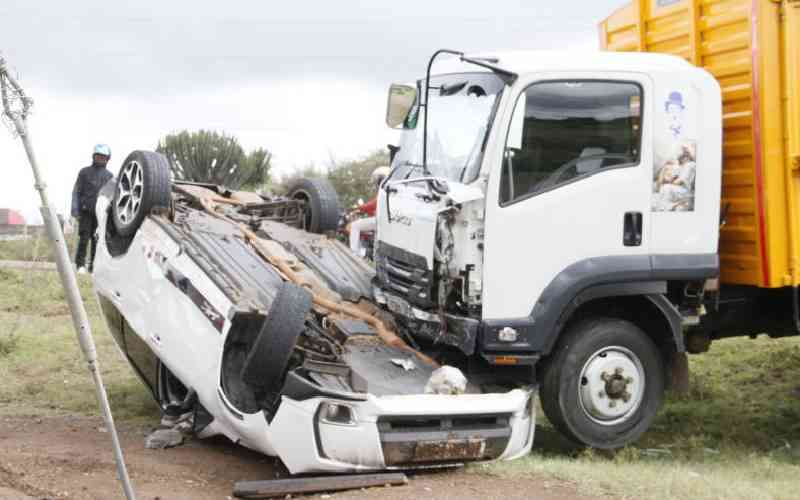Kenya is grappling with a surge in deadly road crashes, making road safety an urgent national priority, with recent weeks seeing a rise in fatalities.
Approximately 70 people lost their lives between August 1 and August 10, 2025, according to data from the Kenya Red Cross Emergency Operations Centre.
In response, the Ministry of Roads and Transport announced a seven-day nationwide road safety audit, dispatching a multi-agency team to inspect high-risk road segments, reconstruct crash scenes, and recommend interventions to curb the carnage.
This rapid audit, born out of tragedy, underscores that Kenya can no longer treat road fatalities as unavoidable accidents. It marks a turning point in the demand for a re-examination of frameworks and enforcement measures, especially in speed management.
Follow The Standard
channel
on WhatsApp
Speed is the most critical factor in road crashes, affecting both the likelihood and severity of collisions. At higher speeds, drivers have reduced fields of vision, less reaction time, and require longer distances to brake which makes crashes more likely.
These crashes are also far deadlier: According to the World Health Organisation, a 1 per cent increase in mean speed leads to a 3 per cent rise in serious injuries and a 4 per cent rise in fatalities, while, as explained in the Global Road Safety Partnership Speed Management Manual, a 50 per cent increase in speed results in roughly 125 per cent more crash energy that must be absorbed on impact.
Most vulnerable road users, such as pedestrians and cyclists can often survive being hit by a car traveling at 30 km/h, but survival odds drop sharply at higher speeds. In practical terms, a pedestrian struck at 50 km/h faces a fatality risk about five times higher and a serious injury risk roughly twice as high as if struck at 30 km/h.
This evidence supports lowering speed limit to 30 km/h in urban areas with high traffic mixes such as residential areas, school zones, markets, and commercial districts.
Beyond speed, other significant contributors to high crash rates include major behavioural risk factors such as drunk driving, failure to use helmets and seatbelts, distracted driving, fatigue, and reckless overtaking. Additional risks stem from poor vehicle conditions, overloading, inadequate infrastructure, and enforcement gaps.
Kenya’s National Road Safety Action Plan 2024–2028 recognises that managing speed is key to saving lives. Priority Six of the plan champions safer speed limits and stronger enforcement in line with the global Safe System Approach which emphasises five key elements: Safe road users, safe vehicles, safe roads, safe speeds, and post-crash care.
It advocates 30 km/h limits in built-up areas where pedestrians and vehicles mix, 50 km/h on other urban roads, and 70 km/h on undivided highways.
Complementing these reforms is technology-driven enforcement, deploying automated speed cameras and intelligent speed assistance to ensure compliance, a strategy proven to reduce crashes. All these measures support the plan’s overarching goal, aligned with the second UN Decade of Action for Road Safety (2021 to 2030), to halve road traffic fatalities by the end of this decade.
Achieving this goal requires more than recommendations, it demands implementation. This is a call to turn policy into practice, and legislate speed limits, provide funding, enforce them consistently, and sustain these measures long after the headlines fade.
The Kenya Red Cross Society, working collaboratively with the National Transport and Safety Authority and the Global Road Safety Partnership, is advocating to reduce the speed limit from 50 km/h to 30 km/h on roads with high traffic mix of vulnerable road users and motorised transport.
By acting decisively on speed management and other behavioural risk factors, while also addressing vehicle conditions, road design, and enforcement, we can make Kenyan roads safer for all.
Ms Lulia is Policy and Advocacy Officer at International Centre for Humanitarian Affairs. [email protected]
Follow The Standard
channel
on WhatsApp
By Natasha Lulia
